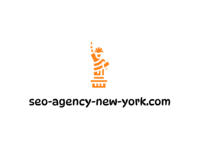
|
IN BRIEF
|
Pay-Per-Click (PPC) advertising is a pivotal strategy in the realm of digital marketing, empowering businesses to enhance their online presence. By utilizing this model, advertisers pay a fee each time their ad is clicked, ensuring that costs are directly tied to user engagement. This approach supports various campaign goals, such as increasing sales, generating leads, and promoting brand awareness. Understanding the fundamentals of PPC is essential for marketers aiming to leverage this effective advertising technique, which encompasses the use of targeted keywords, bidding processes, and the optimization of ad quality to achieve desired results.
Understanding Pay-Per-Click (PPC) Advertising
PPC, or Pay-Per-Click, is a prominent digital advertising model where advertisers are charged a fee each time their ad is clicked. This system allows businesses to increase their online visibility and reach targeted audiences effectively. It operates primarily through search engines, where ads appear next to organic search results, capturing the attention of users actively seeking related products or services. The process involves bidding on specific keywords; advertisers specify the maximum amount they are willing to pay for each click, making it a flexible option suitable for various campaign goals, including elevating sales, generating leads, and enhancing brand awareness.
To illustrate, when someone searches for “best running shoes” on Google, the top results may include sponsored results marked as ads. If the user clicks on an ad, the advertiser incurs a charge. The cost is variable and depends on factors like the competitiveness of the keyword and the quality of the ad itself. It’s important for businesses to optimize their PPC campaigns by selecting effective keywords, monitoring their bidding strategy, and ensuring their ads are engaging and relevant to the target audience. By mastering these fundamentals, businesses can harness the power of PPC for maximized online presence and ROI.
Understanding Pay-Per-Click Advertising
Pay-Per-Click (PPC) advertising is an essential component of modern digital marketing strategies. This model allows advertisers to pay a fee each time their ad is clicked, which means that the costs are directly tied to user engagement. In fact, according to research, businesses make an average of $2 in revenue for every $1 they spend on PPC, highlighting its cost-effectiveness when executed properly. PPC is incredibly versatile and can be tailored to meet various campaign objectives, such as increasing sales, generating leads, or promoting brand awareness. For instance, companies can utilize PPC to target a specific audience based on their search behaviors, which ensures that the right message reaches the right people at the right time.
Additionally, understanding the mechanisms behind PPC involves grasping concepts such as Cost-Per-Click (CPC), which refers to the actual amount spent for each click on an ad. This is pivotal for budget management and optimizing return on investment (ROI). Furthermore, keyword selection plays a crucial role in the success of PPC campaigns. Effective keywords can significantly improve visibility on search engine results pages (SERPs), resulting in better click-through rates. However, businesses must also recognize the importance of ongoing campaign optimization to maintain and improve their PPC performance. Continuous analysis and adjustment of bidding strategies, ad copy quality, and landing pages can lead to maximized effectiveness in reaching marketing goals.
Understanding the World of PPC Advertising
Basics and Key Components of PPC
Pay-Per-Click (PPC) is an essential component of digital marketing that focuses on driving traffic to websites through paid advertisements. With PPC, advertisers pay each time a user clicks on their ad, meaning you only incur costs when a potential customer expresses interest. This model is advantageous for various campaign goals, such as increasing sales, generating leads, and boosting brand awareness.
To create a successful PPC campaign, it is crucial to understand the fundamental elements that make it effective. By mastering these basics, businesses can optimize their advertising efforts and achieve better results. For instance, utilizing effective keywords can greatly influence the visibility of your ads on platforms like Google, where users are likely to click on relevant search results.
- Keyword Research: Identifying relevant keywords is the first step in any PPC campaign. Tools available online can help in selecting keywords that align with your target audience’s search queries.
- Bidding Strategy: Understanding how to set bids for your ads is crucial. Advertisers must decide how much they are willing to pay for each click, considering the competition and expected return on investment (ROI).
- Ad Quality Score: Maintaining a high quality score is essential for better ad placement and lower costs. This depends on factors like click-through rates, ad relevance, and landing page experience.
- Continuous Optimization: Regularly analyzing campaign performance and making adjustments based on the data can lead to improved results over time. This includes tweaking ad copy, targeting and bidding strategies.
By focusing on these elements, businesses can refine their PPC strategies and drive more effective advertising campaigns. To explore further, resources such as The Ultimate Guide to PPC Marketing and What Is PPC? provide valuable insights and examples of successful PPC implementations.
Understanding Pay-Per-Click (PPC) Advertising
Pay-Per-Click (PPC) is a powerful digital advertising model where advertisers incur a cost each time their ad is clicked. This system allows businesses to drive traffic to their websites and reach a wider audience effectively. Essentially, you are paying only for actual engagement rather than just displaying your ad, making it an economically sound strategy for various campaign objectives.
PPC can be employed for diverse goals, including increasing sales, generating leads, and promoting brand awareness. Advertisers can create targeted campaigns that resonate with their audience, enhancing the efficiency of their marketing efforts. Understanding the basics of PPC, including keyword selection, bid management, and quality score optimization, is crucial for running successful campaigns.
When launching a PPC campaign, businesses not only gain visibility on search engine results pages (SERP) but also have the opportunity to analyze campaign performance through detailed metrics. Tracking cost-per-click (CPC) and return on investment (ROI) allows marketers to fine-tune their strategies continually, ensuring maximum effectiveness over time.
To maximize the benefits of a PPC campaign, it is essential to grasp the fundamental elements of keyword research, ad copy creation, and ongoing optimization. Mastery of these components can transform a basic ad into a high-performing digital asset that yields significant results for the business.
Pay-Per-Click (PPC) advertising is a powerful tool that allows businesses to increase their online visibility by paying for clicks on their ads. The fundamental concept is straightforward: you pay every time someone clicks on your ad, which means you only incur costs when there is active engagement with your content. This model is highly effective for various campaign goals, including increasing sales, generating leads, and promoting brand awareness.
One of the key components of PPC is understanding keywords, as they help target the right audience. Bidding strategies and quality scores also play a crucial role in determining the success of your campaigns. By mastering these elements, advertisers can craft compelling campaigns that ensure a high return on investment.
Ultimately, PPC advertising provides an accessible entry point for businesses looking to expand their reach. By leveraging the insights discussed, companies can create effective PPC strategies that deliver measurable results and foster growth in an ever-competitive digital landscape.
